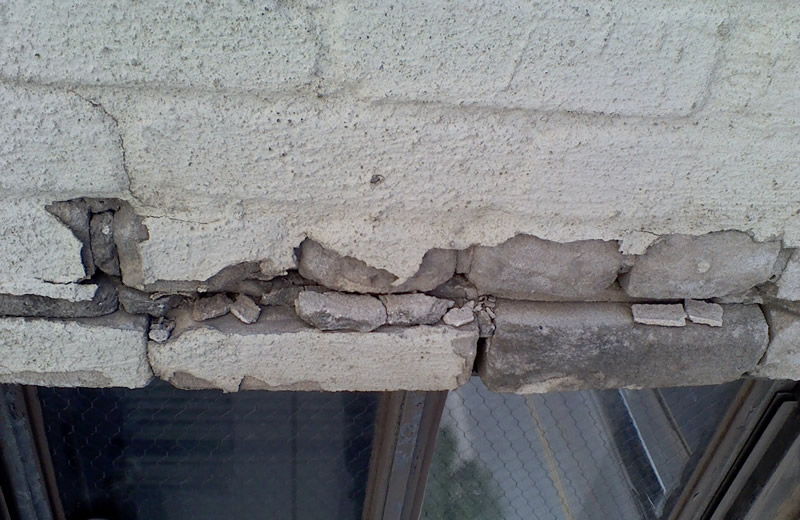Commercial masonry restoration

We often get calls from building owners or managers when the masonry veneer of their building has become cracked or is crumbling. That poses a structural risk to the rest of the masonry, as I’ll explain. But it’s also unsightly and usually unacceptable to any building occupant.
This is particularly problematic with retail and food service buildings, where damage is visible to customers. That gives customers the impression that the building isn’t a priority to the owner. And if that’s the case, maybe the service isn’t a priority, either.
Many times this type of veneer deterioration leads to water infiltrating the tenant space. Wet floors, damaged sheet rock and paint, soiled ceiling tiles, and the cultivation of mold are all normal occurrences with these types of issues—none of which would be pleasant to deal with for a patron or occupant!
In this post, you’ll learn about what causes the usual problems with masonry, and why it’s important to take care of those problems quickly.
How does water infiltrate masonry veneers?
 Wear is responsible for a lot of water damage. Wherever two pieces of the veneer come together, there’s a joint. These joint seals become worn and loose from harsh weather and yearly changes in temperature.
Wear is responsible for a lot of water damage. Wherever two pieces of the veneer come together, there’s a joint. These joint seals become worn and loose from harsh weather and yearly changes in temperature.
Most of these types of joint sealants are only designed to last for 5 years or so and most are made of organic materials, meaning that UV Sun rays will eventually decompose these materials and lead to failure. Once the control joints fail, water from driving rains have direct access to the interior wall assembly. This also happens with perimeter window frame joints and deteriorated mortar joints.
A ll of these joints, if not properly sealed or tuck-pointed, can provide direct access for water to access the wall cavity. Once this occurs, water infiltration is almost certain to cause havoc.
ll of these joints, if not properly sealed or tuck-pointed, can provide direct access for water to access the wall cavity. Once this occurs, water infiltration is almost certain to cause havoc.
Spalling, when pieces of the masonry break off from the whole, can also lead to more water infiltration, as well as extreme safety concerns with falling debris. Cracks lead to more cracks, and eventually you end up with a lot of unsightly crumbling, spalling and—most certainly—water infiltration into the building.
Why early masonry repair is important
O nce water is seeping through the veneer, you’re at risk for a much more serious problem, particularly in the wintertime when this moisture can freeze at night and thaw during the day.
nce water is seeping through the veneer, you’re at risk for a much more serious problem, particularly in the wintertime when this moisture can freeze at night and thaw during the day.
These freeze-thaw cycles wreak havoc on masonry veneers and usually require masonry replacement instead of the less costly repair of tuck-pointing. It’s the same old adage, “the longer you wait, the more it will cost.”
It’s just not worth putting off repairs. The longer you go without fixing exposed joints or masonry deterioration, the more susceptible the wall assembly will be to severe damage. It’s best to restore the masonry before it becomes a much more costly process to repair. This advice will not only reduce your investment, but will help you avoid potential customers questioning the quality of your service, or turning potential tenants away from considering a lease.
